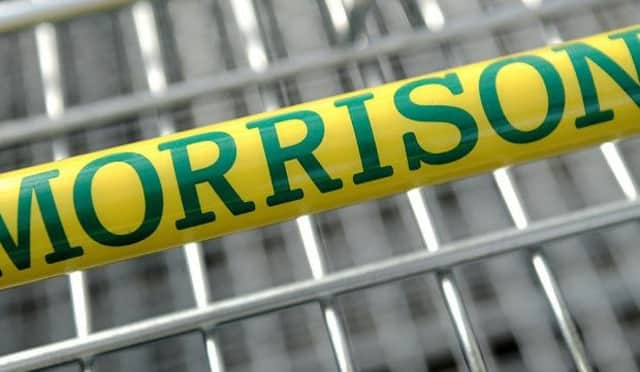Morrisons and Asda were worst performers over Christmas


Asda suffered the most with a 3.8 per cent fall in sales while Bradford-based Morrisons saw sales decline 2.2 per cent, according to the latest Kantar Worldpanel data.
The established firms’ loss was the discounters’ gain with sales at Lidl leaping 18.7 per cent while Aldi enjoyed a 13.7 per cent rise in the 12 weeks to January 31.
Advertisement
Hide AdAdvertisement
Hide AdFraser McKevitt, head of retail and consumer insight at Kantar Worldpanel, said: “We haven’t seen any effect yet from Asda’s latest £500m price cuts which only affected three out of the 12 weeks.
“Asda doesn’t have the convenience store growth so it has been harder hit. Asda’s business is fundamentally about its big stores so they need to focus on growth at the 95 largest stores.
“There has been a lot of turmoil at head office with a number of people going.
Asda has announced an overhaul of its biggest stores, taking out little used services such as photo development, and another round of price cuts in a bid to close the gap with the discounters.
Advertisement
Hide AdAdvertisement
Hide AdAsda’s market share has fallen from 16.9 per cent to 16.2 per cent year on year, allowing Sainsbury’s to overtake it as the UK’s second biggest grocer behind Tesco.
Mr McKevitt said that Morrisons’ decline was largely due to the sales of its 140 M Local stores.
“Morrisons’ internet business is growing strongly and they are definitely cutting prices.
Morrisons is getting a lot better, but if they are going to win they will have to steal market share from another retailer,” he said.
Advertisement
Hide AdAdvertisement
Hide AdMorrisons’ market share fell from 11.1 per cent to 10.8 per cent year on year. Over the same period Aldi’s share rose from 4.9 per cent to 5.6 per cent and Lidl’s rose from 3.5 per cent to 4.2 per cent.
“Both Aldi and Lidl are growing particularly strongly,” said Mr McKevitt.
“Both are getting new shoppers through the door. Lidl shoppers are buying more items so its basket size is getting bigger. Aldi has already done this so Lidl is catching up. We can expect both retailers to continue to take market share this year as they fulfil their plans for more outlets.”
Tesco’s sales fell 1.6 per cent, taking its market share from 29.0 per cent to 28.5 per cent.
Advertisement
Hide AdAdvertisement
Hide Ad“Things have got a little better for Tesco,” said Mr McKevitt.
“The fundamentals are still very difficult and its big stores are still in decline but not as much as they were.”
Sainsbury’s was the only one of the big four grocers to increase its sales, which rose 0.6 per cent, lifting its market share from 16.7 per cent to 16.8 per cent.
The Co-operative was the fastest growing non-discounter, increasing sales by 1.4 per cent. The Co-op is now the most frequently visited major supermarket. Its customers shopped there an average of 19 times over the past 12 weeks, compared with a market average of 11 visits.
Advertisement
Hide AdAdvertisement
Hide Ad“The Co-op had a terrible time when it took over Somerfield in 2011 and it was a bit confused as to whether it was a supermarket or a convenience store chain,” said Mr McKevitt.
“It decided it was convenience and it now has the right range in the right stores.